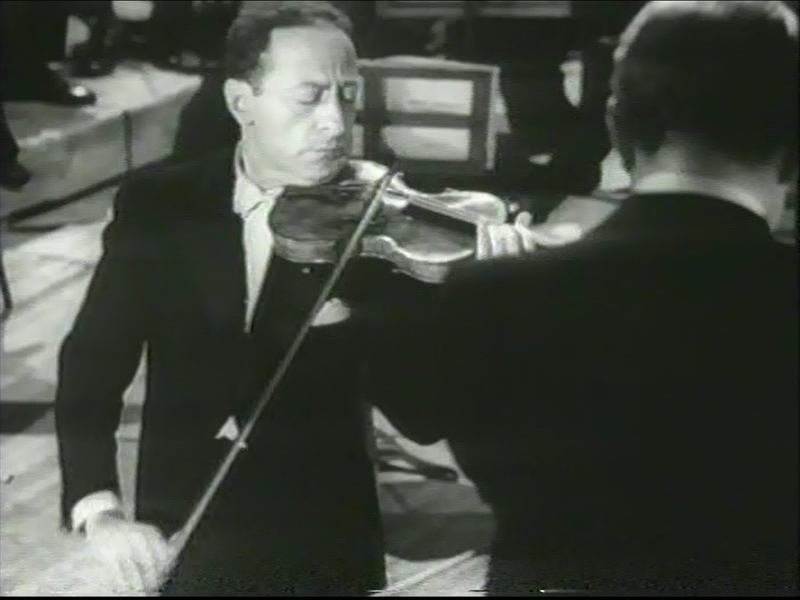In an era where classical music must constantly prove its relevance in the face of digital saturation and short attention spans, artists like Chloe Chua provide a welcome resurgence of purity, precision and promise. As the world of the arts seeks rejuvenation, Chua’s emergence signals a new chapter. This young Singaporean violinist is more than a prodigy; she is a beacon of what classical music can be in the hands of a new generation. Her rise to global acclaim has not only enchanted audiences but has also begun to redefine the parameters of youth, virtuosity, and musical emotion.
In a field traditionally dominated by European and American influences, Chua’s journey from Singapore’s vibrant music education system to international concert halls underscores the changing face of classical excellence. Introduced to the violin at the tender age of four, Chloe Chua’s talent was nurtured through an education system that prizes discipline, artistry and mentorship. Today, her performances marked by remarkable precision, depth of feeling and stylistic maturity reflect years of rigorous training and innate musicality.
But what truly sets Chloe apart is not just her technical prowess. It is her ability to interpret familiar compositions with striking emotional clarity and youthful energy. From her award-winning performance at the Yehudi Menuhin International Competition to her recordings with the Singapore Symphony Orchestra, Chloe breathes life into every phrase, every note. Her artistry embodies a rare fusion of control and emotion, a voice that speaks across generations.
This article explores the story of Chloe Chua in depth: her origins, influences, key milestones, and the vision she brings to the global stage. It is a story of talent, yes, but more importantly of vision, discipline and a deep love for the art. In Chloe, we witness the future of classical music unfolding, one heartfelt performance at a time.
Chloe Chua’s Early Life and Musical Upbringing
A Childhood Immersed in Sound
Chloe Chua was born in 2007 in Singapore, a city-state renowned for its academic excellence and, increasingly, its cultural sophistication. Music entered her life at just two and a half years old, through piano lessons with her mother, a piano teacher. Yet it was the violin that would become her true calling. By age four, Chloe was already studying violin under the direction of Yin Ke at the Nanyang Academy of Fine Arts (NAFA), an institution known for its rigorous training and support of young talent.
Singapore’s music education system provided a fertile ground for Chloe’s growth. The country’s investment in the arts, combined with a structured and meritocratic approach to music training, has produced a wave of world-class musicians. For Chloe, this meant access to high-calibre mentors, public performance opportunities, and an environment that encouraged excellence.
Training at the School of Young Talents
At NAFA’s School of Young Talents, Chloe honed not only her technique but also her interpretive sensibilities. Under Yin Ke’s long-term guidance, she developed a performance style that marries elegance with emotional power. Her training was not simply about mastering scales and études, but about understanding music as a language, a vehicle for storytelling.
From a young age, Chloe displayed an uncommon musical maturity. Teachers and observers often remarked on her ability to convey complex emotions far beyond her years. It was this emotional intelligence, paired with her innate sense of tone and phrasing, that began to set her apart from her peers.
Milestones That Shaped a Career
The Yehudi Menuhin International Competition
Chloe’s breakthrough came in 2018 when, at just 11 years old, she won the Junior Division of the prestigious Yehudi Menuhin International Competition for Young Violinists, held in Geneva. Sharing the top prize with Christian Li, Chloe’s performance captivated judges and audiences alike. Her interpretations were not only technically flawless but imbued with a rare emotional subtlety.
The Menuhin win placed Chloe Chua on the global classical music map. Suddenly, she was not just a local prodigy but an artist of international stature. Invitations for concerts, collaborations and masterclasses followed, setting the stage for a career defined by both rigour and reach.
A Residency with the Singapore Symphony Orchestra
In 2022, Chloe was named Artist in Residence with the Singapore Symphony Orchestra (SSO), a position she held for two seasons. During this time, she performed cornerstone works such as Bruch’s Violin Concerto, Mozart’s Violin Concerto No. 3 and Vivaldi’s Four Seasons. Her collaboration with the SSO led to the release of her debut album under the Pentatone label, a recording that showcased both her virtuosity and her interpretive depth.
The residency was more than a performance opportunity. It marked Chloe’s formal integration into Singapore’s cultural landscape, allowing her to mentor younger musicians, participate in outreach programmes, and deepen her connection with local audiences.
Global Performances and Recognition
Beyond Singapore, Chloe has performed across Europe, the United States, and Asia. Highlights include appearances with the China Philharmonic Orchestra, the Salzburg Chamber Soloists, and at festivals in Italy, Australia and Japan. Her international engagements have affirmed her reputation as an artist capable of captivating audiences regardless of geography.
A Distinctive Style: Precision Meets Emotion
A Voice That Resonates
Chloe Chua’s style is distinguished by its clarity and emotional integrity. Critics often speak of her performances as “crystalline” and “pure,” yet never cold. She combines technical brilliance with a subtlety that draws listeners into the emotional core of the music.
Her interpretation of Vivaldi’s Four Seasons, particularly “Winter,” has been widely praised. In her hands, the movement is not merely a display of speed and dexterity, but a vivid narrative rendered with nuance. The biting winds, the icy silence, the fleeting warmth of firelight, all are conveyed with theatrical sensitivity and precision.
The Role of Interpretation
For Chloe, technique is not an end but a means. Her focus lies in making the music speak. She has said in interviews that her goal is to connect with audiences, not to dazzle them. This philosophy is evident in her playing: expressive yet never indulgent, controlled yet never mechanical.
This balance is perhaps what makes her playing so captivating. In a world increasingly dazzled by speed and novelty, Chloe Chua reminds us that musical greatness still resides in depth, thoughtfulness and soul.
Education, Mentorship and Growth
Studies in Berlin
As of 2024, Chloe Chua continues her musical development in Germany under Professor Kolja Blacher at the Hochschule für Musik Hanns Eisler in Berlin. This phase marks a natural evolution in her journey, exposing her to the European musical tradition and a new circle of artistic influence. Blacher, himself a former concertmaster of the Berlin Philharmonic, brings to Chloe’s education a legacy of orchestral excellence and solo artistry.
Masterclasses and Collaborations
Chloe remains actively engaged in collaborative projects, including masterclasses with esteemed artists and educational outreach. She has worked with TwoSet Violin and appeared in educational broadcasts like PBS’s “Great Performances,” expanding her reach to digital audiences and reinforcing her role as both performer and educator.
These engagements illustrate Chloe’s desire to remain a student of music, even as she becomes its ambassador. She approaches each experience with humility and curiosity, qualities that suggest a long, evolving career.
Cultural Identity and the Global Stage
Embracing the East and the West
One of Chloe’s most compelling contributions to classical music is her ability to embody both Eastern and Western influences. While her training is rooted in the Western classical canon, her cultural identity informs her interpretation and artistic choices.
This duality was beautifully illustrated in her 2024 album featuring the “Butterfly Lovers Violin Concerto,” a beloved Chinese work. Chloe approached the piece not simply as a violinist, but as a storyteller deeply connected to its themes. The result was a performance that resonated across cultural lines, offering a fresh perspective on an iconic composition.
A Singaporean Voice on the World Stage
Chloe’s success underscores the strength of Singapore’s arts ecosystem. The country’s emphasis on early music education, combined with opportunities for public performance and international exposure, has enabled her rise. In Chloe, we see the embodiment of a new kind of classical musician: globally aware, culturally grounded, and emotionally resonant.
Looking Ahead: The Future of Chloe Chua
A Career in Bloom
At just 17, Chloe Chua has already achieved what many musicians strive for in a lifetime. Yet her career is clearly in its early stages. With upcoming performances, new recordings and international festival appearances, Chloe is poised to deepen her impact on the classical music world.
Beyond the Concert Hall
Her vision extends beyond performance. Chloe has expressed interest in education, composition and cultural diplomacy. Whether through mentoring young musicians or championing underrepresented works, she appears ready to shape not only how music is played but how it is shared.
An Enduring Legacy in the Making
It is rare to witness the beginnings of a career that already feels historic. Chloe Chua’s artistry, grounded in discipline and lifted by imagination, holds the promise of enduring legacy. She is more than a violinist. She is a storyteller, a bridge between generations, and a luminous presence in the world of the arts.
A New Milestone: The Mozart Album Arriving July 2025
In July 2025, Chloe Chua will unveil her most ambitious recording project yet: a complete set of Mozart violin concertos, along with two Rondos and the Sinfonia Concertante, K.364. This eagerly anticipated album will be released on 18 July worldwide by Pentatone .
The project began when Chloe was just fifteen years old, indicating a long‑term artistic vision rarely seen in young musicians. The recording features all five of Mozart’s violin concertos, rounded out with Rondo K.269 and Rondo K.373. The Sinfonia Concertante includes a standout collaboration with violist Ziyu He, another laureate of the Yehudi Menuhin Competition, sharing the stage in meaningful musical dialogue .
Chloe records alongside the Singapore Symphony Orchestra under the baton of Hans Graf, a conductor with whom she shares a special musical relationship. Reflecting on the album, Chloe explained that despite the abundance of historic interpretations, she felt compelled to chart her own course. She chose to “follow [her] heart as a teenager like [Mozart] and find [her] own interpretations as one” .
Available in a luxurious 3‑CD and 4‑LP vinyl edition, this release continues Chloe’s exclusive partnership with Pentatone, which began with her early recordings of Vivaldi, Locatelli, Butterfly Lovers and Paganini . It also marks a milestone in her career: since December 2024, she has been under the management of IMG Artists, opening doors to further international engagements and artistic growth .
This Mozart album promises to reveal yet another facet of Chloe’s artistry. Placing herself alongside the youthful spirit of Mozart, she blends technical brilliance with emotional insight, reaffirming her belief that identity and authenticity are as vital as tradition. In doing so, she invites listeners to experience these timeless works with fresh ears and a youthful heart.
Conclusion
Chloe Chua is a phenomenon not merely for her age or ability, but for her rare capacity to channel emotion with eloquence and purpose. From Singapore’s conservatories to Berlin’s concert halls, from Vivaldi to the Butterfly Lovers, her journey is a testament to the power of passion nurtured by structure.
As she continues to grow and redefine what it means to be a young artist today, Chloe offers a compelling vision for the future of classical music. It is one in which technical mastery serves emotion, cultural diversity enriches tradition, and every note played speaks not just of the past, but of what is yet to come.
In celebrating Chloe Chua, we celebrate the boundless potential of the next generation. Classical music has a vibrant future, and its name is already being written in elegant, precise and moving phrases, one performance at a time.
José Amorim
This article was created exclusively for LuxuryActivist.com. All content is protected by copyright. Images are used for illustrative purposes under fair use. If you own the rights to any image and wish it to be removed, please don’t hesitate to contact us, and we will act promptly.











































